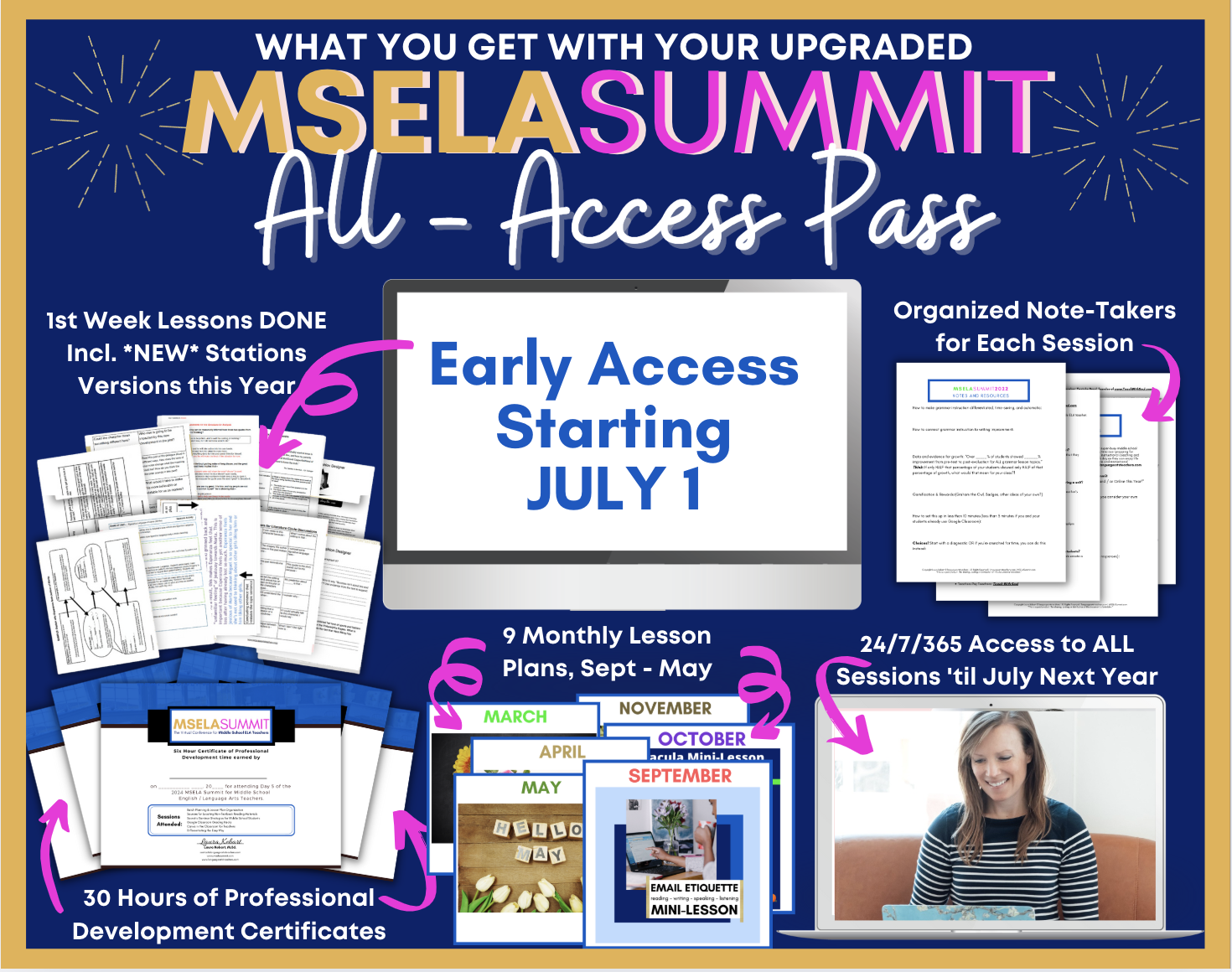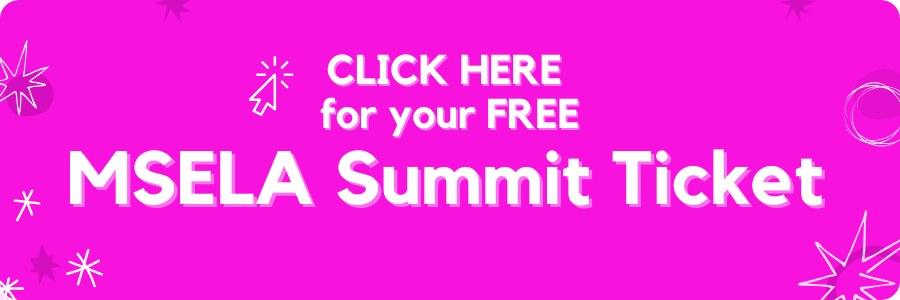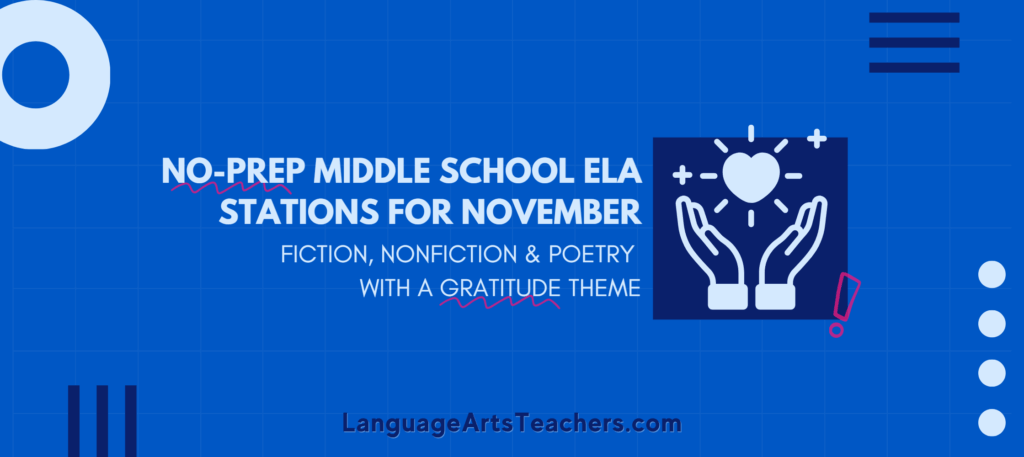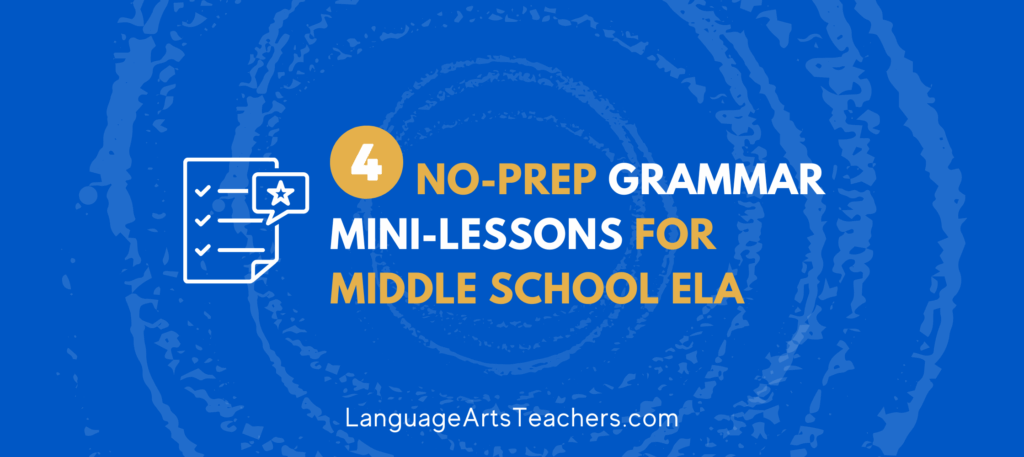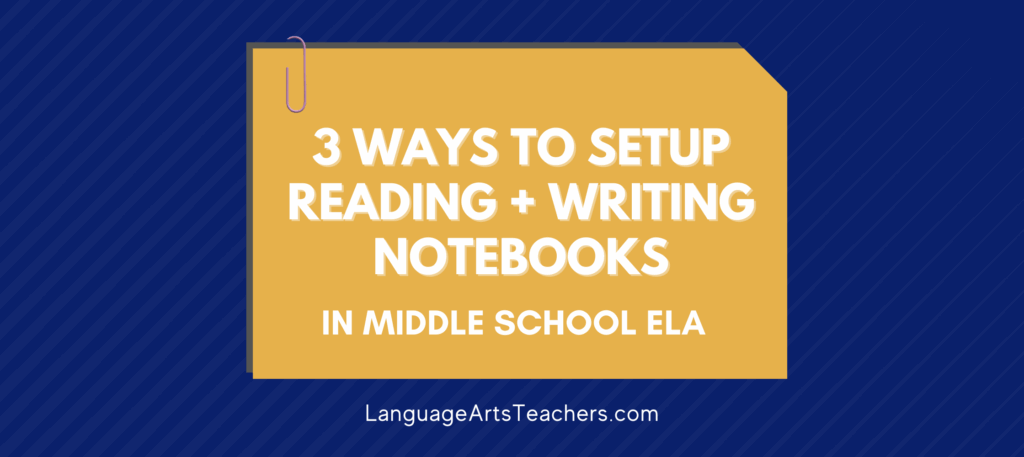Writing is hard—especially when you’re teaching middle schoolers with a million distractions (the group chat! the snacks! the existential crisis over which hoodie to wear!).
As AI becomes more and more embedded in our lives as adults (I mean, I can’t even run a quick Google search of local dog groomers without automatic AI support popping up first), we can maybe start to use it to make writing more engaging, less intimidating, and way more interactive for our students. I don’t have all the answers, but I’m experimenting with AI a little bit here and there in terms of how to help my students approach writing in new ways.
No, we’re not talking about AI doing all the work (I see you, copy-paste crew 👀). Instead, we’re talking about using AI as a creative collaborator—more like a thought partner— that helps students brainstorm, experiment with language, and even critique their own writing.
If you’re looking for ways to make writing feel fresh, fun, and interactive, then experiment with me on some of these AI-powered strategies to boost engagement in middle school writing. The goal for me at least, is to use AI as a partner, not as a replacement for thinking… And that’s the approach I’m taking with my students.
Pro Tip: You don’t have to do any of this whole-class style if you’re anxious about opening up a giant rabbit hole city that you can’t find your way out of.
For me, I like to try new things in my small-group “teacher station” first. That way, I can monitor and interact on a small scale without losing my mind and wishing I’d never tried in the first place.
10 AI-Powered Engagement Strategies for Middle School Writing
1️⃣ AI as a Peer Reviewer – Have students submit rough drafts to AI for feedback using the writing rubric you may have already provided them. Students then evaluate AI’s suggestions. Does it help? Is it too generic? How would they improve it? How should they change their prompt to AI in order to get better, more specific results to help them figure out how to improve their writing (or which part of their writing to improve) in order to earn a higher score on the rubric?
2️⃣ Sentence Expansion & Compression Game – Give AI a simple sentence, and ask it to expand it into something more descriptive. Students have to know what that “more descriptive” element would be, which means they have to have knowledge of the purpose of their own writing. Then, reverse it: take a long, complex sentence (maybe a whole paragraph they wrote that is all one, long sentence) and make it more concise. Students critique AI’s attempts, giving it better or different prompts to get better outcomes (this is writing-rich because students have to constantly ‘play” with the written requests they give AI to see how to get better results).
3️⃣ AI-Powered Dialogue Generator – Have students feed AI a scenario, then generate a dialogue exchange. Students refine the conversation, adding emotion and voice. Great for fiction writing!
4️⃣ AI as a Writing Prompt Generator – Need inspiration? Students can ask AI to create unique writing prompts based on their own interests. They pick their favorite and then explain why it’s a compelling prompt for them to explore. This is helpful for independent research purposes in terms of students taking a topic of interest and narrowing it down to one that is ready for research.
5️⃣ Rewrite It in a Different Style – Students write a paragraph, then ask AI to rewrite it in a different tone (formal, humorous, spooky, poetic). They analyze how tone changes meaning.
6️⃣ AI vs. Human Poetry Battle – Students write a poem on a given topic (if you use my monthly stations, then the poetry vocabulary station is perfect for this!). Then, have AI generate one too. Students vote on each other’s poems to decide which is better—without knowing which one is AI-created!
7️⃣ Story Starters with AI – AI generates the first two sentences of a story. Students should decide ahead of time what type of story (historical fiction, mystery, sci-fi, etc.). Students take over from there and write the rest. If you don’t want students taking this too far, then have them hand-write the first two sentences on paper, and then close their devices as they begin writing. I love to see my students “think through” their writing by doodling in the margins. It’s like getting to see them think and process without the distraction of open tabs and blinking cursors.
8️⃣AI-Generated Writing Challenges – AI can create wacky constraints (e.g., “Write a spooky story with zero adjectives” or “Write a love letter using only sports metaphors”), and then let students pick one to write about (similar to #7 above, where students will close their devices and continue to write from there). This is a fun one to gather up all the wacky prompts and then redistribute them to the class. It’s actually a great writing activity for the end of the year.
9️⃣ Real vs. AI News – AI generates a fake news article on a current event. Students must research and fact-check it, turning it into an exercise in media literacy and writing accuracy.
🔟AI-Powered Podcasting – Students script and record a short podcast episode on a novel they’re reading. AI helps generate discussion questions or fun segment ideas.
AI isn’t a magic wand that suddenly makes every kid love writing (if only!). But when used thoughtfully, it can lower the barrier to creativity, provide instant feedback, and make writing feel more like a game instead of a chore.
So remember what I mentioned earlier: I don’t always enjoy trying all new things with my entire class. This AI as a writing tool / thought partner / idea generator is something I recommend doing in a small-group teacher-led “station” where you can really see, interact with, and guide the process. This is where I’m at with it right now, and this is my comfort level. Now that may change, but it’s ok to start small with where you are. AI isn’t going away, but it also doesn’t mean we have dive in with both feet when we’re trying to figure it all out, too.
That’s why I wanted to share some wins like I listed above that you can try, too, especially in those smaller group settings where you have more ways to guide and support your students. Hope that’s helpful 🙂
You know what’s happening at the MSELA Summit, the back-to-school virtual conference for Middle School ELA Teachers?
→ Along with everything else you want to know about back-to-school reading + writing strategies, classroom management + engagement, and scaffolding for our struggling students, we’re also including a handful of sessions specifically designed to help Middle School Reading & Writing Teachers leverage AI for student use AND for our own use as well.
Get your free ticket to the MSELA Summit which is the annual back-to-school virtual conference specifically designed for Middle School ELA Teachers.
Click Here for the Dates + Details!

